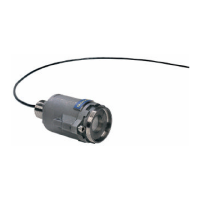30
2.1.3. Special precautions for explosive gas detectors
• Cells are sensitive to certain poisons, which can reduce their sensitivity: emission of
silicone-containing vapours at concentrations > 10 ppm and chlorinated or sulphurous
products at concentrations > 100 ppm.
• A lack of oxygen (< 15% O
2
) or over-oxygenation (> 23% O
2
) may cause under-
measurement (in the former case) or over-measurement (in the latter case).
• Cells must be located head downwards at installation or during maintenance work.
2.1.4. Response to other explosive gasses
It is recommended that the detector is calibrated using the gas to be measured. Users wishing to
calibrate the detector using a gas other that detected and factory-programmed should refer to the
following table, and use the recommended gas and corresponding coefficient.
Table 1: CALIBRATION COEFFICIENTS
Gas
Empirical
formula
LEL
1
UEL
1
Vapour
density
Coefficient
3
CH
4
H
2
But
Gas recommended for sensor calibration
Example (first row of table): calibration of an Acetone detector using 1% butane (by volume) as the
calibrating gas
Value to be displayed:
1% (butane injected) x 100 x 0.95 (Butane/Acetone coefficient) = 63% LEL
1.5% (butane LEL)
N.B.:
- LELs vary depending on the source. Those values shown here are taken from European
Standard EN 50054
- Coefficients are accurate to ± 15%

